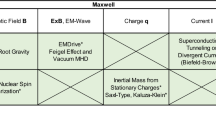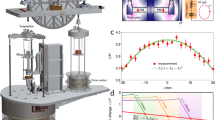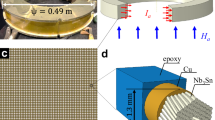Abstract
THE recent great advances in methods of calculating coefficients of mutual and self-induction, due to Prof. Jones and his colleagues in the work, has suggested that a method, which occurred to me some years ago, for the absolute determination of resistance might now be employed with, I think, some advantages over even the Lorentz method. It is as follows:—Take an earth inductor coil, fixed so that it can revolve continuously, thus giving a pure sine voltage, due to cutting the lines of the earth's magnetic field. Take the coils made by the Committee for the determination of the ampere, as described by Prof. Ayrton, and use the two outside coils as the primary and the inside coil as the secondary of a transformer. Pass the current from the earth inductor through one set of coils of a Kelvin balance, and thence through the primary of the transformer. Then through the (non-inductive or easily calculated inductive) resistance required to be measured, thence back to the earth inductor. Connect the secondary of the transformer to the other set of coils of the Kelvin balance, and speed up the earth inductor till the Kelvin balance arm becomes horizontal, and the pull on the two sets of coils is equal. Then take out the resistance we are measuring, and speed up the inductor till the Kelvin balance comes to zero again.
This is a preview of subscription content, access via your institution
Access options
Subscribe to this journal
Receive 51 print issues and online access
$199.00 per year
only $3.90 per issue
Buy this article
- Purchase on SpringerLink
- Instant access to full article PDF
Prices may be subject to local taxes which are calculated during checkout
Similar content being viewed by others
Author information
Authors and Affiliations
Rights and permissions
About this article
Cite this article
FESSENDEN, R. Absolute Determination of the Ohm. Nature 59, 605–606 (1899). https://doi.org/10.1038/059605d0
Issue date:
DOI: https://doi.org/10.1038/059605d0



